剧情简介
《典当商》改编自EdwardLewisWallant同名小说,主人公是一名犹太人典当商,从纳粹集中营逃出后在纽约哈莱姆经营当铺时维持生计,男主角罗德·斯泰格尔由此获得了当年奥斯卡影帝的提名。
On Miss Birchfield’s terrace, our somber, reserved hero Sol Nazerman bitterly uttered his ‘long lost’ experience: ‘It’s been a long time since I felt ... fear. ... There have been memories that I have ... Well, I thought that I had pushed them far away from me, and they keep rushing in. And then there are words that I thought that I have kept myself from hearing and … now they flood my mind.’ Indeed, the fear that overwhelms Sol is generated from his memories. And memory introduces two key issues in this film, that is, how does one live with traumatic memories that he intentionally tried to ‘push away’ and in what ways can the art of filmmaking approach them.
As for the first question, one may answer with the role played by memory in Sol’s ‘dead’ life: in fact, this debilitated character, who keeps himself remote from everyone, solely has his dire memories as company. In the terrace conversation, he refuses Miss Birchfield’s sympathy of him ‘being alone’ with a sneer – for Sol, the problem is not loneliness (we may also recall her naïve comparison between her loss of husband and Sol’s experience in the camp), but the memories that kept haunting him and depriving him of serenity. Despite Tessie’s father’s furious accusation of being a ‘walking dead’, Sol cannot, if we quote Rodriguez in a later scene in the film, ‘die when (he) want(s) it so badly’. Memory is a phantom lives in his body, dominating his pawnbroker life all the time. Thus, we may say that, although related to the old times, memory, per se, is not a series of events that happened in the past. It is what grabs you and parasitizes you as you walk down the journey of life.
So, how does one live with memories that they try to eliminate but keep flooding back? The answer is, he takes them as fragments that randomly interrupt his semi-conscious mind. And here comes the answer to our second question: Lumet’s splendid montage is the key to represent such kind of memory. Take the scene when the prostitute strips at the pawnshop for example. When she first mentions the name of Rodriguez, a picture of a Nazi officer is cut in twice, extremely briefly. And then a static picture of his wife cuts in, also very briefly. The pictures disappear so quickly that the audience almost cannot figure out what it really is – some may not even notice it. Then, as she strips with her suggestive line ‘Look’, we begin to catch the full picture of Sol’s dreadful memory of seeing his wife being forced into prostitution. And this is exactly how such kind of memories intrudes our real life. At first, it comes to you almost randomly and briefly, so brief that you might not even notice it. You only sense, something is there. And this tiny fragment works like a pebble drops into the deep lake of your mind. As it sinks, a dimple hundreds times bigger than the pebble itself expands in the surface - the brief fragments eventually recall a huge picture which overlays your current life. And the disturbing truth is, once the pebble drops, you can no longer protect your lake from forming the toxic dimple.
Apart from the brilliant montage that reveals the myth of how memories work, the usage of black and white pictures also contributes to enhance the effect of memories. On the one hand, as in Schindler’s List, the black and white in The Pawnbroker also works to express hopelessness, bitterness and solemnness. But unlike the much more reassuring colored candle used as a symbol of hope in Schindler’s List, The Pawnbroker’s usage of complete black and white places a much harsher reality: 20 years after the WW II, survivors cannot see any hope. This change, by the way, is also a very interesting topic concerning the possibilities of making art out of the Holocaust. On the other hand, if we see black and white as a widely used method in filmmaking to illustrate things happen in the past, we discover an intention to eliminate the boundary between the past and the present. The memories of old days before the Camp are colorless because they make the tragedy even tougher. Days in the Camp are reasonably black and white whereas the current life cannot be colorful because memories from the past are always there, depriving any possible colors. Also, while Lumet used sharp contrast of black and white to present different places and mental status, in most cases the two colors mixes into an undistinguishable grey, a color that best summarizes the state of Sol’s mind – indifferent, inescapable and desperate. Though one may argue that on seeing the death of Jesus, Sol starts to ‘sense the shame of his detachment’ (the flashbacks of faces before he slams his hand down on a paper spike can be an evidence), we have to be aware of the fact that Sol is actually going through another cycle of picking up horrible memories and carrying them downwards.
On Miss Birchfield’s terrace, our somber, reserved hero Sol Nazerman bitterly uttered his ‘long lost’ experience: ‘It’s been a long time since I felt ... fear. ... There have been memories that I have ... Well, I thought that I had pushed them far away from me, and they keep rushing in. And then there are words that I thought that I have kept myself from hearing and … now they flood my mind.’ Indeed, the fear that overwhelms Sol is generated from his memories. And memory introduces two key issues in this film, that is, how does one live with traumatic memories that he intentionally tried to ‘push away’ and in what ways can the art of filmmaking approach them.
As for the first question, one may answer with the role played by memory in Sol’s ‘dead’ life: in fact, this debilitated character, who keeps himself remote from everyone, solely has his dire memories as company. In the terrace conversation, he refuses Miss Birchfield’s sympathy of him ‘being alone’ with a sneer – for Sol, the problem is not loneliness (we may also recall her naïve comparison between her loss of husband and Sol’s experience in the camp), but the memories that kept haunting him and depriving him of serenity. Despite Tessie’s father’s furious accusation of being a ‘walking dead’, Sol cannot, if we quote Rodriguez in a later scene in the film, ‘die when (he) want(s) it so badly’. Memory is a phantom lives in his body, dominating his pawnbroker life all the time. Thus, we may say that, although related to the old times, memory, per se, is not a series of events that happened in the past. It is what grabs you and parasitizes you as you walk down the journey of life.
So, how does one live with memories that they try to eliminate but keep flooding back? The answer is, he takes them as fragments that randomly interrupt his semi-conscious mind. And here comes the answer to our second question: Lumet’s splendid montage is the key to represent such kind of memory. Take the scene when the prostitute strips at the pawnshop for example. When she first mentions the name of Rodriguez, a picture of a Nazi officer is cut in twice, extremely briefly. And then a static picture of his wife cuts in, also very briefly. The pictures disappear so quickly that the audience almost cannot figure out what it really is – some may not even notice it. Then, as she strips with her suggestive line ‘Look’, we begin to catch the full picture of Sol’s dreadful memory of seeing his wife being forced into prostitution. And this is exactly how such kind of memories intrudes our real life. At first, it comes to you almost randomly and briefly, so brief that you might not even notice it. You only sense, something is there. And this tiny fragment works like a pebble drops into the deep lake of your mind. As it sinks, a dimple hundreds times bigger than the pebble itself expands in the surface - the brief fragments eventually recall a huge picture which overlays your current life. And the disturbing truth is, once the pebble drops, you can no longer protect your lake from forming the toxic dimple.
Apart from the brilliant montage that reveals the myth of how memories work, the usage of black and white pictures also contributes to enhance the effect of memories. On the one hand, as in Schindler’s List, the black and white in The Pawnbroker also works to express hopelessness, bitterness and solemnness. But unlike the much more reassuring colored candle used as a symbol of hope in Schindler’s List, The Pawnbroker’s usage of complete black and white places a much harsher reality: 20 years after the WW II, survivors cannot see any hope. This change, by the way, is also a very interesting topic concerning the possibilities of making art out of the Holocaust. On the other hand, if we see black and white as a widely used method in filmmaking to illustrate things happen in the past, we discover an intention to eliminate the boundary between the past and the present. The memories of old days before the Camp are colorless because they make the tragedy even tougher. Days in the Camp are reasonably black and white whereas the current life cannot be colorful because memories from the past are always there, depriving any possible colors. Also, while Lumet used sharp contrast of black and white to present different places and mental status, in most cases the two colors mixes into an undistinguishable grey, a color that best summarizes the state of Sol’s mind – indifferent, inescapable and desperate. Though one may argue that on seeing the death of Jesus, Sol starts to ‘sense the shame of his detachment’ (the flashbacks of faces before he slams his hand down on a paper spike can be an evidence), we have to be aware of the fact that Sol is actually going through another cycle of picking up horrible memories and carrying them downwards.
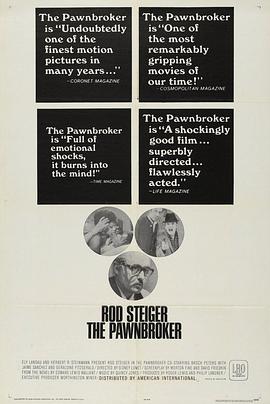
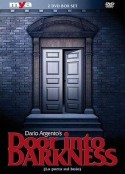

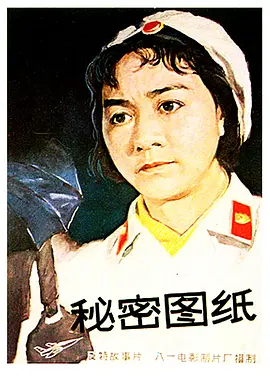
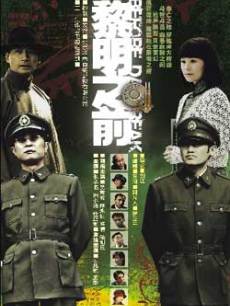


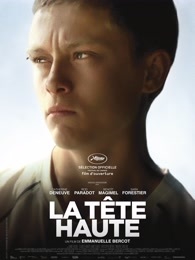




典当商影评
On Miss Birchfield’s terrace, our somber, reserved hero Sol Nazerman bitterly uttered his ‘long lost’ experience: ‘It’s been a long time since I felt ... fear. ... There have been memories that I have ... Well, I thought that I had pushed them far away from me, and they keep rushing in. And then there are words that I thought that I have kept myself from hearing and … now they flood my mind.’ Indeed, the fear that overwhelms Sol is generated from his memories. And memory introduces two key issues in this film, that is, how does one live with traumatic memories that he intentionally tried to ‘push away’ and in what ways can the art of filmmaking approach them.
As for the first question, one may answer with the role played by memory in Sol’s ‘dead’ life: in fact, this debilitated character, who keeps himself remote from everyone, solely has his dire memories as company. In the terrace conversation, he refuses Miss Birchfield’s sympathy of him ‘being alone’ with a sneer – for Sol, the problem is not loneliness (we may also recall her naïve comparison between her loss of husband and Sol’s experience in the camp), but the memories that kept haunting him and depriving him of serenity. Despite Tessie’s father’s furious accusation of being a ‘walking dead’, Sol cannot, if we quote Rodriguez in a later scene in the film, ‘die when (he) want(s) it so badly’. Memory is a phantom lives in his body, dominating his pawnbroker life all the time. Thus, we may say that, although related to the old times, memory, per se, is not a series of events that happened in the past. It is what grabs you and parasitizes you as you walk down the journey of life.
So, how does one live with memories that they try to eliminate but keep flooding back? The answer is, he takes them as fragments that randomly interrupt his semi-conscious mind. And here comes the answer to our second question: Lumet’s splendid montage is the key to represent such kind of memory. Take the scene when the prostitute strips at the pawnshop for example. When she first mentions the name of Rodriguez, a picture of a Nazi officer is cut in twice, extremely briefly. And then a static picture of his wife cuts in, also very briefly. The pictures disappear so quickly that the audience almost cannot figure out what it really is – some may not even notice it. Then, as she strips with her suggestive line ‘Look’, we begin to catch the full picture of Sol’s dreadful memory of seeing his wife being forced into prostitution. And this is exactly how such kind of memories intrudes our real life. At first, it comes to you almost randomly and briefly, so brief that you might not even notice it. You only sense, something is there. And this tiny fragment works like a pebble drops into the deep lake of your mind. As it sinks, a dimple hundreds times bigger than the pebble itself expands in the surface - the brief fragments eventually recall a huge picture which overlays your current life. And the disturbing truth is, once the pebble drops, you can no longer protect your lake from forming the toxic dimple.
Apart from the brilliant montage that reveals the myth of how memories work, the usage of black and white pictures also contributes to enhance the effect of memories. On the one hand, as in Schindler’s List, the black and white in The Pawnbroker also works to express hopelessness, bitterness and solemnness. But unlike the much more reassuring colored candle used as a symbol of hope in Schindler’s List, The Pawnbroker’s usage of complete black and white places a much harsher reality: 20 years after the WW II, survivors cannot see any hope. This change, by the way, is also a very interesting topic concerning the possibilities of making art out of the Holocaust. On the other hand, if we see black and white as a widely used method in filmmaking to illustrate things happen in the past, we discover an intention to eliminate the boundary between the past and the present. The memories of old days before the Camp are colorless because they make the tragedy even tougher. Days in the Camp are reasonably black and white whereas the current life cannot be colorful because memories from the past are always there, depriving any possible colors. Also, while Lumet used sharp contrast of black and white to present different places and mental status, in most cases the two colors mixes into an undistinguishable grey, a color that best summarizes the state of Sol’s mind – indifferent, inescapable and desperate. Though one may argue that on seeing the death of Jesus, Sol starts to ‘sense the shame of his detachment’ (the flashbacks of faces before he slams his hand down on a paper spike can be an evidence), we have to be aware of the fact that Sol is actually going through another cycle of picking up horrible memories and carrying them downwards.